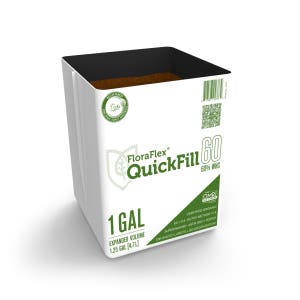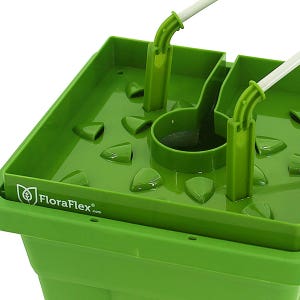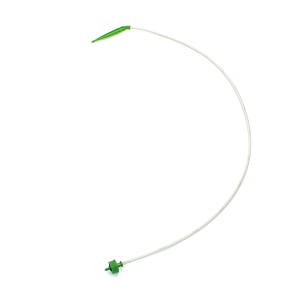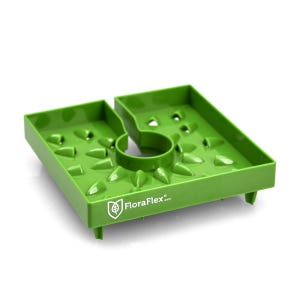If you grow cannabis indoors or in a greenhouse, then you know the importance of light to your plants. But do you know how high light intensity impacts hemp growth?
The relationship between the cannabis plant and light has become quite complex. Ensuring that your marijuana gets constant light is no longer enough. To get a better yield, you now need to focus on other aspects of lighting.
Apart from the spectra of light and its quality, light intensity is becoming a focal point to cannabis researchers and growers.
The evolution of lighting technology continues to unveil quality cannabis grow lights. These products can meet the light demands of cannabis. However, you first need to understand the effects of high light intensity on your plant.
Once you do, you’ll know exactly how to use indoor grow lights for cannabis. And improve the quality of your yield.
In this post, you’ll find out everything you need to know high light intensity affects cannabis growth.
Lighting and Chlorophyll Production in Hemp Plants
Chlorophyll converts the light your cannabis plant receives into food. The food energy it generates aids the growth of your marijuana plant. Cannabis leaves have different types of chlorophyll.
The cannabis plant will require a different form of chlorophyll at a particular stage of its growth.
Hemp plants have distinct concentrations of chlorophyll. And the work of these compounds is to absorb ample light from the violet and red spectrums. These are spectrums that fall within the range of 430 to 600nm.
Chlorophyll b can absorb a wider spectrum. If you want to improve your yield, you need to manipulate the light wavelength. The goal is to achieve a light intensity that drives the production of the right type of chlorophyll.
Unfortunately, you cannot manipulate natural light to your plant's advantage. But you can control cannabis grow light set up to achieve your goals.
Tune-up of your cannabis grow lights is integral to achieving a high concentration of violet and red lights. These lights produce PAR energy that is also found in natural light. Hemp cultivators can this technique to make sure their indoor plants benefit from the right light intensity.
The Definition of High Light Intensity
Most cannabis growers target anything between 700 PPFD to 1000 PPFD to grow hemp. In the mid-summer, outdoor light can hit 2000 PPFD.
Experts consider anything that goes beyond 2000 PPFD to be high light intensity. If you can achieve this, you stand a chance to produce a better yield.
Nonetheless, you have to identify the light cycles that are beneficial to the cannabis plant. Otherwise, you might do more harm than good to your hemp plant.
Cannabis and Lighting Cycles
Cannabis plants begin producing flowers when exposed to short light intervals. These plants have the phytochrome far-red and the phytochrome red receptors.
These receptors signal whether the cannabis plant will start producing flowers. Or it will remain in its vegetative stage. When the plant experiences longer darkness periods, far-red and red receptors change
The shift signals the plants to produce flowers. If you provide longer periods of light to the plant, you are prolonging its vegetative stage.
After the plant attains optimum vegetation, you switch to providing shorter periods of light. You cannot achieve this kind of control with natural light. And unlike the metal halide light, you have more control with LED grow lights.
Cannabis grows lights provide much-needed flexibility. You can switch them on and off instantly. And you can also control the intensity of the light they produce.
With LED grow lights, you have the power to prolong or shorten the blooming or vegetative stages. If you do it strategically, you'll improve the quality and quantity of your cannabis yield.
What is the Best Light Intensity for Cannabis?
Experts recommend at least 1800 micromoles for the hemp plant. At this level, you are likely to get the best value for your plant. After you hit 1000 micromoles, a 1 % increase in the light intensity translates into a 1% increase in yield.
These gains start to diminish once you go beyond the 1800 PPFD mark. The bottom line is that cannabis can take light more than any other plant.
If you expose most plants to this kind of light intensity, phototoxicity will occur. It will manifest itself as a form of leaf burning or leaf curl.
Still, you do not want to overwhelm your cannabis with tremendously high light intensity. It may reach a point where the plant can no longer achieve photosynthesis. And this will result in plant damage.
How to Adjust Lighting Condition for Cannabis
The only time you are likely to reach the 1800 PPFD mark is during the mid-summer. For both indoor and outdoor growers this option is not viable. The only way it works for indoor growers is by investing in LED grow lights.
With these lights, you can manipulate the quality and intensity of light. If you manage to do it at the right stage of the cycle, a good yield will be on the horizon.
A combination of red, blue, and green illumination can boost the production of cannabinoid and terpene content. These are the ingredients of a quality hemp yield.
Striking a balance between the color and spectrum of light is a great place to start. Growers, however, need to adjust the intensity of green. If it goes beyond the optimum point, it will affect your hemp plant negatively.
When you grow cannabis, you are always looking to achieve maximum terpenes. Adjusting your cannabis grow lights at the flowering stage can help. At this time, your hemp plant will need a high light intensity.
White light also contributes to your plant's terpenes. Using the grow lights, you can increase the intensity of the white light and hit your target.
Light Intensity and Cannabis Plant Density
Studies show that high light intensity with a plant density of about 16 plants per square meter increases THC concentration. It also increases the hemp yield when compared to lower light intensity. The same intensity does not produce a similar yield and THC concentration when you increase the plat density to 20.
Factors to Consider when Adjusting Light Intensity
Cultivators can leverage the benefits of high light intensity when growing cannabis. But even as they do so, they should exercise caution for the best results. Here are some of the factors to consider;
Growing Environment Parameters
Apart from the light intensity, there are other factors that influence the growth of cannabis. These include humidity, temperature, nutrients, and so on.
For instance, you should closely watch the vapor pressure deficit. The aim is to ensure that both humidity and temperature are harmonious. As you manipulate your cannabis grow lights to attain the right light intensity, keep the VPD within 0.9 to 1.3 kPa.
Factor in Daily Light Integral
If you grow cannabis in a greenhouse, consider the Daily Light Integral. It is a measure of the amount of light that your plant gets in a photoperiod.
DLI is usually measured in moles per day. Greenhouse growers use these metrics to supplement the days without sunshine.
During the flowering stage, you should decrease the DLI and increase the light intensity. The photoperiod should be 12 hours during the flowering stage. And 18 hours during the vegetative stage.
Consider Increasing Nutrients and Water
When you increase the light intensity, your hemp plant is going to need water and nutrients. This is because you w have provided the plant with more energy. Be prepared for these changes if you want to maximize the yield without damaging the plants.
Growers Tiers should Consider Veg Time
Veg time is another important factor that growers should not overlook. When using a tier system, leaving your plants in the veg stage for too long can be counterproductive.
You do not want cannabis plants to outgrow the available space. When you prolong the veg time, the plant will grow big. In the flowering stage, it will become much bigger.
The best strategy is to keep your cannabis plants short.
Invest in High-Quality Cannabis Grow Lights
With cannabis grow lights, you can achieve the high light intensity that you desire. And the good news is that there are a variety of LED lights in the market.
High light intensity demands the best led grow lights for cannabis. These produce quality light and keep your power bill low.
So are you on a quest to find LED grow lights for your facility? Contact us today for all your cannabis lighting solutions.





















